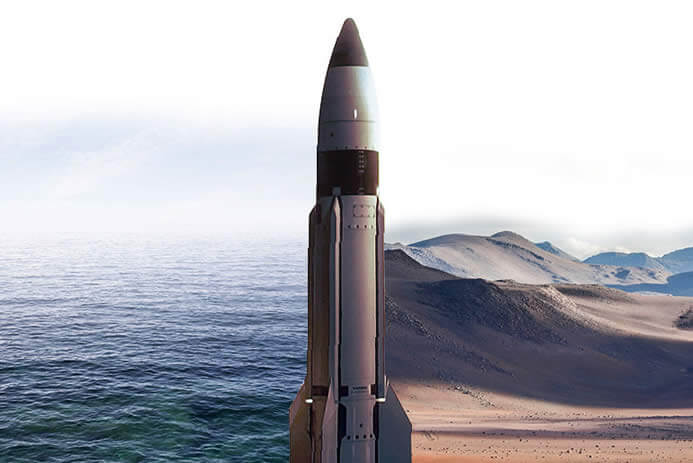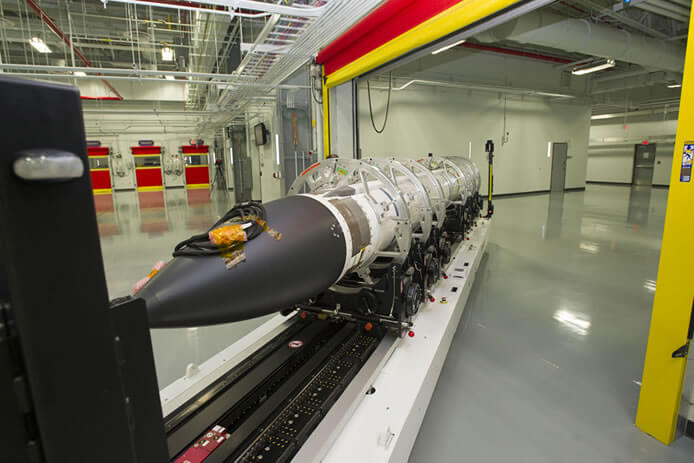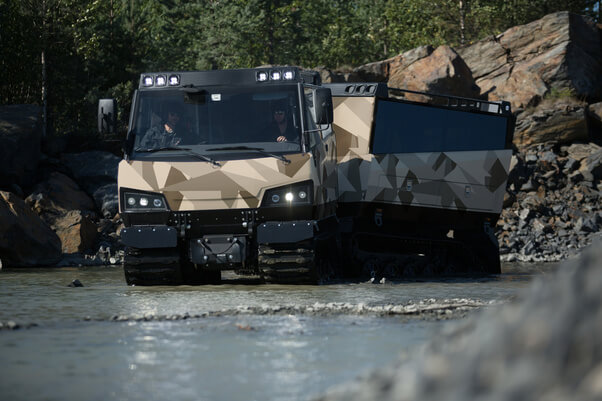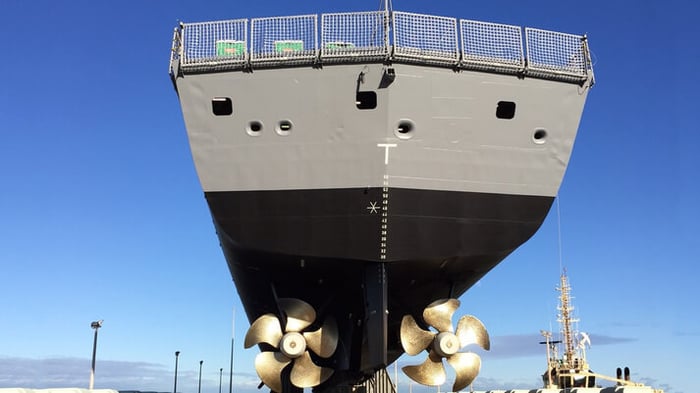
LAND-SEA AIR INTERCEPTOR
On 9 December 2015, the US Missile Defense Agency conducted the first intercept test of a land-based SM-3 from an Aegis Ashore test site at the Pacific Missile Range Facility, Kauai, Hawaii. The SM-3 Block IB destroyed an intermediate range ballistic missile target in a launch-on-remote engagement using a cue from an AN/TPY-2 ballistic missile defense radar.
“This test proved that no matter how you launch it, an SM-3 can hunt down threats in space and destroy them,” said Dr. Taylor W. Lawrence, Raytheon Missile Systems president. “The flexibility to deploy SM-3s from land or sea expands protection options for our combatant commanders and allies around the world.”
 SM-3 Block IIA is the centerpiece of the European missile defense
SM-3 Block IIA is the centerpiece of the European missile defense
system. The program is on track for 2018 deployment
at sea and on land in Poland.
Along with SM-3 Block IB deployment on land in Romania later this year, the Aegis Ashore System will also deploy the SM-3 Block IIA in Poland in 2018. The SM-3 Block IIA was tested in a separate mission on 8 December 2015 at the U.S. Navy’s Point Mugu Sea Range in California. The successful mission confirmed the functionality of the missile’s kinetic warhead and attitude control system, keeping the program on schedule for a first, actual intercept test in 2016.
The SM-3 Block IIA’s larger rocket motors and advanced kill vehicle will allow it to take out threats even earlier and protect larger regions from short- to intermediate-range ballistic missile threats.
“We’re evolving our missile capability to keep pace with the rapidly advancing ballistic missile threat,” said Dr. Mitch Stevison, vice president of Air and Missile Defense Systems. “We’re seeing the fruits of decades of labor pay off.”
The ground-breaking Aegis Ashore test was unique in a number of ways.
"This is the first-ever test of a SM-3 Block IB enhanced with threat upgrade software,” Stevison said. “The ability to upgrade a missile through software enhancements is clearly the way of the future. We’ll be able to outpace the threat much more aggressively than ever before.”
Not all advancements are about upgrading the missile, Stevison noted.
“Yes we want the missile to be more powerful, but we also want to better leverage the full spectrum of assets from sensors to radars like the AN/TPY-2,” he said.
During the recent test, a forward-based AN/TPY-2 ballistic missile defense radar was first to detect the incoming threat target, cueing the SM-3 Block IB’s launch into space.
“The SM-3 and the AN/TPY-2 radar are a perfect pair,” said Tom Laliberty, vice president of missile defense programs at Raytheon Integrated Defense Systems. “When this radar and missile get together, they significantly increase the defended area.”
The radar is so accurate, it can see a baseball hit out of a stadium from hundreds of miles away. Its hawk-like eyes give the SM-3 a jump start on its trip through space, allowing it to destroy the threat closer to the enemy instead of the ally.













